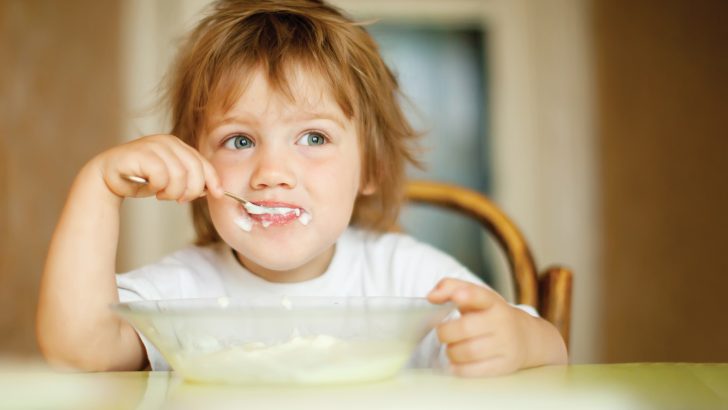What you need to know about the recently launched healthy eating guidelines for toddlers, writes Ruadhán Jones
At the start of October, the Government launched their first-ever healthy eating guidelines for one to four-year olds. The Health Department told us, the guidelines were “developed by nutrition experts in Ireland, the guidelines are based on Irish dietary evidence”.
As we’ve learned recently, however, the limit of experts is their expertise. They are excellent in their own area, but in applying these guidelines to our own lives its worth remembering what they are: guidelines! Not prescriptions, but the ideal as defined by experts in nutrition.
“The suite of resources provides useful and practical nutrition advice to empower parents and to support others including dietitians, health care professionals and preschool teachers,” said Minister for Health Stephen Donnelly at the launch.
Minister Donnelly provides us with the key to interpreting these guidelines, sort of. Instead of “useful and practical” it would probably be better to say “useful where practical”. But having forewarned you, here are the main areas of interest in the Government’s healthy eating guidance.
Portion sizes
“Small tummies need small servings” is the tagline for this section and it is a key element of the guidelines. They provide guidance on serving sizes for children aged one to two and three to four years old. The portions should be small, in proportion to the age, size and how active the child is.
For older, larger children, portions should be larger and it applies to younger, smaller children in the same way. Children who are more active will need to eat more. Because the portion sizes recommended are small, the guidance suggests meals should be focused on the essential food stuffs.
The guidelines recommend a regular routine of three small meals a day plus two or three snacks. For example, a dinner for a one year old might look like 30-40 grams of pasta with 30 grams of minced beef, 30 grams mixed veg and some cheddar cheese. When cooking dinners for a whole family, controlling portion sizes is obviously going to be a challenge.
One simple way the guidelines suggest to get round this is to use smaller plates and bowls. A small portion looks reasonable on a child sized plate. Letting your child feed themselves with child sized cutlery will also help, stopping them from wolfing it down too quickly!
Treat foods
The new guidelines have also launched a new food pyramid specifically for toddlers, with visual guides for reference. The point of the pyramid is to categorise foods according to the number of servings. At the bottom, where the base is wide, are carbohydrates, then vegetables, dairy, meat and poultry, fats and oils and finally, at the narrowest point, foods and drinks high in fat, sugar and salt.
As a portion guide, this is nothing new and the ordering of importance will surprise very few people. Perhaps the most surprising element is the treats section, which reads:
“These are NOT needed for health or for keeping children at a healthy weight. Sweets, chocolate, biscuits, cakes, fizzy drinks or crisps should not be a part of your child’s everyday diet. Having foods and drinks from this shelf spoils your child’s appetite for more nutritious food. If you decide to give your child these foods offer them in TINY amounts and only once a week” (their own capitalisation).
The definition of TINY is “one square of chocolate, three crisps, half a plain biscuit or three soft sweets”. The reasoning is that these foods are known contributors to childhood obesity, as well as having deleterious effects on your child’s teeth.
As one parent said to me, “children do eat too many sweets, but the Government should regularise food companies who pump the treats full of sugar – that’s what makes them addictive”.
The final, and probably less surprising recommendation is to cut down on processed and frozen foods. Foods like frozen pizza, chicken nuggets, burgers or chips can be high in fat and salt and should therefore be limited to once a week.
Healthy snacking
The guidelines recommend 2-3 snacks a day, and they provide a long list of healthy snacks as alternatives for treats. While not exhaustive, here are a few of the suggestions:
- Small pieces of fruit
- A small pot of yoghurt
- Sliced cucumber sticks
- Breastfeed or glass of milk
- Sliced, hard boiled egg
Other suggestions, but ones which should be limited due to high sugar content, are dried fruit, custards and rice pudding. The last two are high in calcium and can be offered a few times a week. If you are buying them, make sure to check the sugar content. The best way to control that, in the end, is to make it oneself.
Drinks
The two main drinks the guidelines recommend are water and milk, including breastmilk. Tea, they specify, is not a suitable drink for children, and drinks full of sugar should be limited to once a week, if at all. Where fruit squashes are drunk, the ratio should be 1 part squash to 10 parts water.
Water is the best drink, with 6-8 servings recommended per-day. For young children, a beaker with a top is advised, but a cup or glass will do once the children are older. The guidelines recommend milk due to its high calcium content.
Breastfeeding is recommended for children up to or beyond two years of age, as per the World Health Organisation’s (WHO) guidance. If not breastmilk, then full-fat milk is better for children aged 1-2 years old, though you can offer low-fat milk to children aged 3-4.
Milk alternatives are generally not recommended for young children, so this discounts skimmed milk, almond milk, coconut milk, rice milks and other plant-based milks. Soy milk, however, is suitable for children who are allergic to lactose, so long as it’s not sweetened.
Vitamins
The guidelines place an especial emphasis on young children getting enough vitamin D and iron, especially in the winter months. Vitamin D is important for growth, helping children to develop strong and healthy bones.
Unsurprisingly, reports suggest that Irish children do not get enough vitamin D during the winter months – this vitamin is gained from sunlight. As a result, the guidelines recommend giving children a vitamin D only supplement every day from Halloween (31st October) to St Patrick’s Day (17th March). The safest way of introducing this supplement to the diets of children aged 1-4 is through a 5 microgram (5μg) vitamin D only supplement in liquid or drop supplement.
The guidelines also say parents should also be aware of iron intake, recommending offering your child red meat three times a week, and choosing breakfast cereals with added iron (ideally at least 12mg of iron per 100g) most days of the week. Vitamin C helps the absorption of iron, so you may choose to give your child a small glass of unsweetened orange juice sometimes when they have iron-enriched cereals to boost the effects.
These guidelines come from Minister for Health Stephen Donnelly TD, together with the Minister for Children, Roderic O’Gorman TD and the Minister of State for Public Health and Wellbeing, Frank Feighan. A number of resources are available on Gov.ie and mychild.ie. For more information, visit here.


 Ruadhán Jones
Ruadhán Jones
